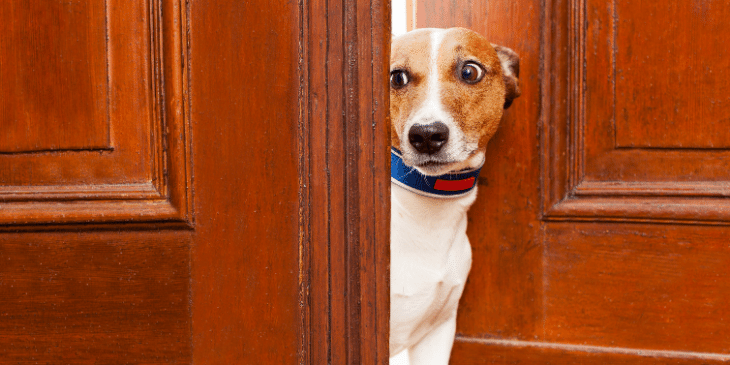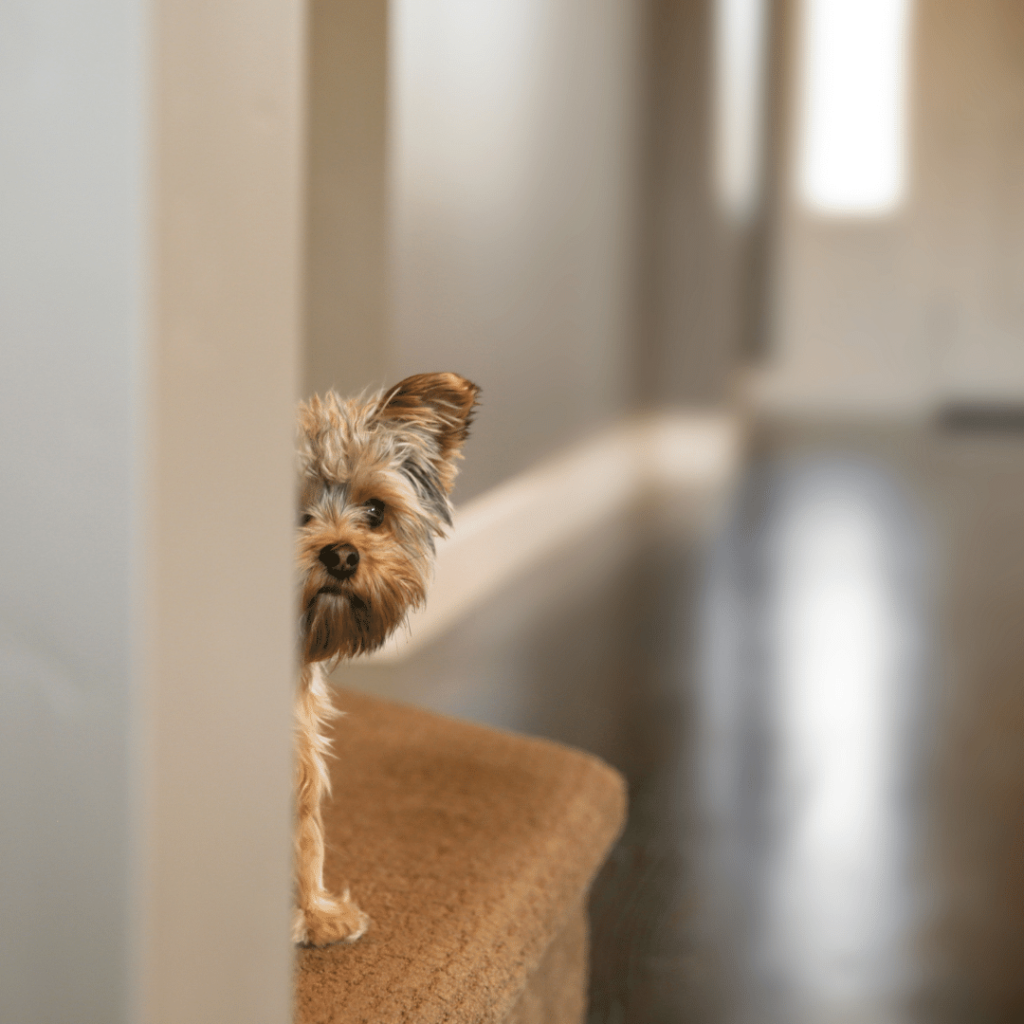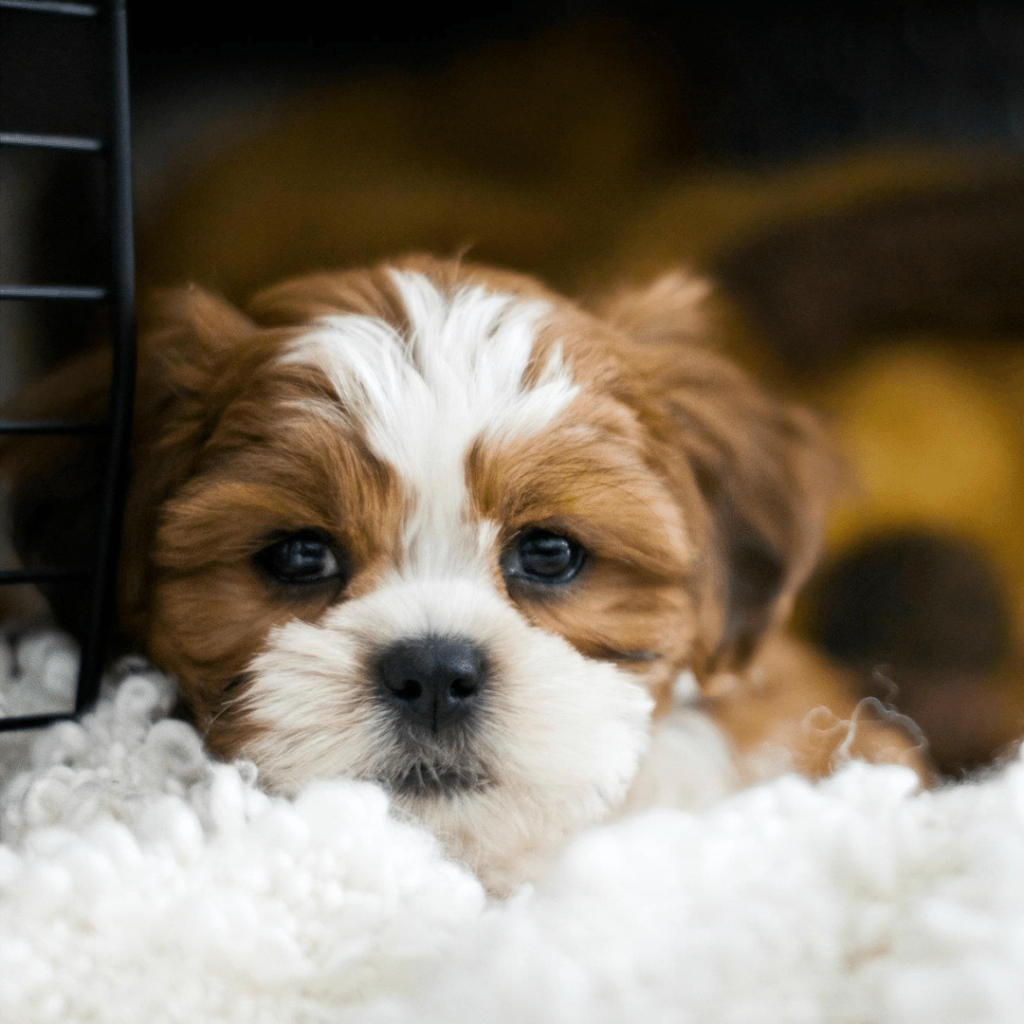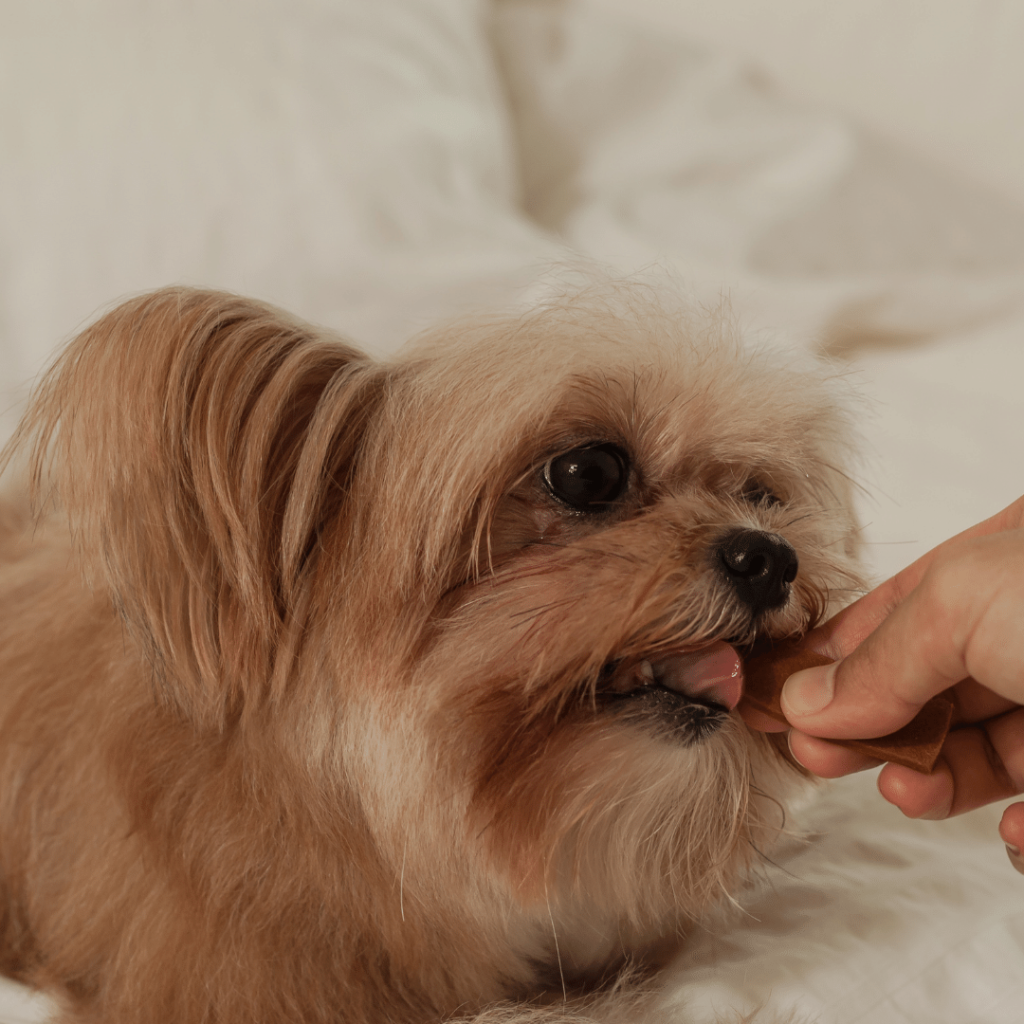My Dog is Scared of Me: 10 Ways to Help

Contents
“My dog is scared of me! What can I do?” This issue happens more often than you might think, and it leaves pet parents feeling completely helpless.
Of course, it’s truly heartbreaking to see your dog cringe away from you in fear when you try to pet him. But perhaps even worse, when your dog is afraid to let you touch him, everything from grooming to training and taking a walk to giving medication can become a traumatic event for both of you.
And a dog who is afraid of his owner often displays other fear and stress-related issues, such as separation anxiety, irrational phobias, and extreme fear of loud noises like fireworks and thunderstorms.
Maybe you have a new dog that’s afraid of you due to unfamiliar surroundings or past experiences. Or, maybe your best buddy has become suddenly fearful and you’re not sure how to help. Either way, it can have a negative impact on your dog’s emotional and physical wellbeing, not to mention the bond between the two of you.
The good news is these issues can be corrected by building your dog’s trust and self-confidence. In this article, we’ll explore why your dog might be scared of you, plus the dos and don’ts of how to help a fearful dog.
Why is my dog scared of me?

Some dogs are just shy or timid by nature. Your dog may be scared of you simply because he lacks self-confidence.
Here are the most common reasons dogs are scared of their owners:
- Abusive treatment from previous owners, such as hitting and/or yelling.
- A history of negative punishment training, which is abuse and destroys the dog’s trust.
- The dog has been traumatized by an aggressive dog or some other aggressive animal.
- The dog can sense that the owner is stressed or fearful.
- The dog may have accidentally been injured by the owner, such as a paw that got stepped on or a tail that got pinched in a door.
- The dog has been through a stressful event, such as moving to a new home, getting a new owner, a change in family dynamics, a car accident, or some other traumatic situation.
- The dog has never been properly socialized, so he’s fearful around new people or in unfamiliar situations.
- Some dogs are just shy or timid by nature. Even if you’ve done everything right and he’s never been traumatized, your dog may be scared of you simply because he lacks self-confidence.
What should I avoid when my dog is scared of me?

Never crowd a scared dog when he retreats to his crate or another safe place.
There are several things you shouldn’t do when your dog is scared of you to avoid scaring him, making the problem worse, or losing his trust even further.
- Never display frustration, impatience, or anger.
- Never withhold affection, attention, or care.
- Don’t crowd your dog when he retreats to his crate or another safe place.
- Don’t try to force your dog to do something when he’s scared (unless it’s a matter of life and death!)
- Avoid negative punishment, yelling, hitting, or any form of physical or verbal abuse at all costs.
- Never lock him in his crate as a punishment.
- Don’t coddle your dog for acting fearful because that will only reinforce the behavior.
What can I do to help when my dog is scared of me?

Offer high-value treats is a great way to form a connection with a dog who’s afraid to be touched.
Here are 10 things you can do to help your dog when he’s scared of you.
1. Talk to Your Vet
You may not think of fear as a health issue, but if your dog is in pain, it’s only natural that he may be afraid it will hurt if you touch him. And, if he feels generally unwell, he may simply want to be left alone. A quick checkup at the vet can ease your mind in case there’s an underlying health problem contributing to his behavior issues.
2. Give it Time
If your dog is new to your family, the most important thing you can do is give him time to adjust. Every dog is different and they each adapt and learn at their own pace. Some dogs will get used to a new environment after just a day or two, while others could take weeks or months.
Of course, the dog’s previous training and past experiences will also play a key role in how quickly he overcomes his fears. The good news is, with time, patience, and consistent effort on your part, most dogs will learn to trust their new family members.
Remember to remain patient and calm at all times. Never try to force your dog or become angry when he’s scared because that will only make him more fearful.
3. Give Him His Own Space
Have you ever had someone come on so strong that it was actually intimidating or made you uncomfortable? Dogs are no different and sometimes what they really need is just a little space.
Let your fearful, shy, or timid dog come to you for attention rather than trying to force it on him. The best way to build his trust is to let him decide how much interaction he wants and when he needs a break.
Your dog should have his own space in your home where he can go to feel safe and relax. It can be a crate, playpen, or a combination of the two. Here are some tips for making his crate as cozy and inviting as possible. Remember to never use his crate for punishment. He should see it as his own personal safe haven.
4. Stick to a Reliable Schedule
Dogs are creatures of habit and they thrive best when they have a predictable, reliable schedule they can count on. When you repeat the same activities at the same time each day in a calm and non-aggressive way, you’ll build your dog’s trust.
And, much like humans, dogs release stress hormones, like cortisol, when they’re scared which only makes things worse. Following a reliable schedule keeps stress hormone levels low, which will help your dog overcome his fear.
5. Strengthen Your Bond with Your Dog
Most dogs, even timid or fearful ones, enjoy human attention. But for some dogs, especially those who have been abused and taught to fear humans, a human touch is cause for fear and anxiety. If this is the case with your dog, you’ll have to work extra hard to create a bond between the two of you.
Instead of offering belly rubs and scratches behind the ears, offer high-value treats and praise as positive reinforcement. Food and a soothing tone are great ways to form a connection with any animal who’s afraid to be touched.
6. Try Different Positive Training Methods
Every dog is different, so be prepared to try a few different training methods to see what works for your fearful dog. Clicker training is an amazing positive training method for many dogs, but some dogs may require a different technique.
For example, classical conditioning training can be very effective for fearful dogs because the dog learns to associate the thing he’s scared of with something positive. This happens naturally with dogs as they learn to associate their leash with going for a walk or their food bowl with being fed.
You can also use this method intentionally to change your dog’s reaction to certain things. For example, if your dog is afraid of his leash, every time you put it on him, offer a high-value treat and lots of praise. Over time he’ll learn to associate his leash only with positive things and no longer be scared of it.
Remember to never punish your dog for making a mistake. On the other hand, coddling him when he’s acting fearful will only reinforce the behavior. The best approach is to ignore the negative behaviors and reinforce the positive ones with treats, praise, and affection.
Research shows that positive reinforcement is much more effective for training dogs than punishment, and this is especially true for fearful dogs with low self-confidence.
Over time, as your dog begins to trust you more, he’ll seek out your attention. He’ll learn that he gets rewarded for positive behaviors and get zero attention for bad ones.
7. Socialize Your Dog at His Pace
If your dog is fearful, the last thing you want to do is force him to be social. Introduce new places, people, and other pets slowly and take your cues from your dog. If he seems scared or overwhelmed, it’s time to back off and take a break.
If your dog is very fearful of interacting with you, allow him to see you positively interacting with another dog. He will begin to trust you if he sees you if sees that other animals trust you.
This technique will be especially helpful if you have another dog in your home, but it will also work in a controlled situation with someone else’s dog, too. Just make sure that the other dog is not fearful or aggressive in any way.
8. Explore Together
There’s no better way to bond with your dog than to spend time together. Take him for long walks every day, go hiking, or walk in the park. Even if you just stay right in your own yard at first, it will be beneficial.
Exploring together will build your dog’s self-confidence and help him overcome his fears. Over time you can get more and more adventurous as your dog becomes more confident and trusting.
9. Find a Way to Play Together
Playtime is also essential for building a bond with your dog. But, when your dog is scared of you, it’s hard to find a way to play together that you’ll both enjoy. For example, tossing a ball in his direction might trigger his fear.
Instead, start out rolling the ball in his direction. Let him chase it, pounce on it, and bop it around with his paws. If he brings it back, that’s awesome. Over time you can begin to toss it gently, eventually working up to a full-blown game of fetch.
Don’t forget to offer lots of positive reinforcement along the way to build up your dog’s confidence.
10. Continue to Focus on Building Trust
Moving forward, continue to focus on building trust and strengthening your bond with your dog. Be consistent with your schedule, positive reinforcement, play, and training to build his self-confidence.
Be careful to keep your dog away from aggressive people and animals so that he doesn’t regress back into negative behaviors.
When introducing your dog to new people and experiences, go slowly and watch for cues that your dog is becoming fearful or overwhelmed. Make sure that people know to let him come to them and not force the interaction. Have them offer treats to break the ice.
If you have a friend with a well-behaved, well-adjusted dog, bring them along on your adventures. Your dog will learn to be more confident and less fearful through the other dog’s influence.
And finally, even when you’re confident that you’ve finally earned your dog’s trust, it’s still important to maintain keep his crate as a safe place. He will always appreciate having a place to retreat to when he’s feeling stressed or even just wants a quiet place to nap.
Wrapping Things Up
Building trust when your dog is scared of you can be a real challenge. But don’t lose hope! It can be done, as long as you’re willing to put in the time and effort. And every minute you spend will be well worth it because creating an unbreakable bond with your dog is one of the most rewarding experiences any pet parent can have.
